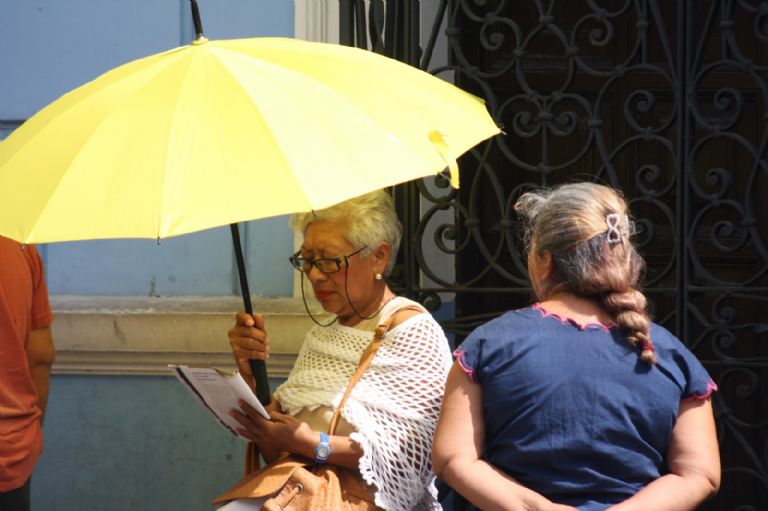So far in February, Mérida has reached the highest levels of solar radiation during peak heat hours, between seven and nine points out of a maximum of 10 that the World Health Organization (WHO) considers a very high risk, according to data from the National Meteorological Service.
According to the WHO, eight to 10 means a very high risk of damage from unprotected sun exposure, the higher the index value, the greater the potential to cause damage to the skin and eyes, and the less time it will take to such damage, such as skin cancer, may occur.
People of any age and skin tone are recommended to limit the amount of time they spend in the sun, especially between 10:00 a.m. and 4:00 p.m., since during that period the highest rates of solar radiation are recorded. Today, February 14, the maximum will be nine.

In recent days, Mérida has registered between five and nine points per day, with the probability of rising in the coming hot season, while in the rest of the State, the records vary, the highest peak is between eight and nine.
At first, it was believed that this situation only affected light-skinned people; However, studies revealed that it can damage all skin types, as UV rays reflect (bounce) off sand, water, snow, cement, and ice and pass through car windshields and windows.
Among the recommendations provided by the World Health Organization are the use of a wide-brimmed hat that provides shade around the face, neck, and ears, since baseball caps and visors only protect some parts of the skin, wearing glasses that filter the UV rays to protect your eyes and the skin around them.

Likewise, wear long sleeves and pants, dark and more tightly woven fabrics are best, some contain ultraviolet protection factor (UPF), the higher the number, the higher the sun protection factor.
One of the products that should be essential is sunscreen, with a minimum protection factor (SPF) of 15. Some doctors recommend using products with a minimum SPF of 30, but the indicated amount should be applied to exposed skin 30 minutes before being outdoors and repeating this every two hours or after swimming or sweating.
The World Health Organization experts warn that among the strongest damages are skin cancer and other disorders related to UV radiation, which include actinic keratosis and premature skin aging. Actinic keratosis is skin growths that occur in areas of the body exposed to the Sun; the face, hands, forearms, and neckline are especially susceptible to this type of injury.
TYT Newsroom
TYT Newsroom


